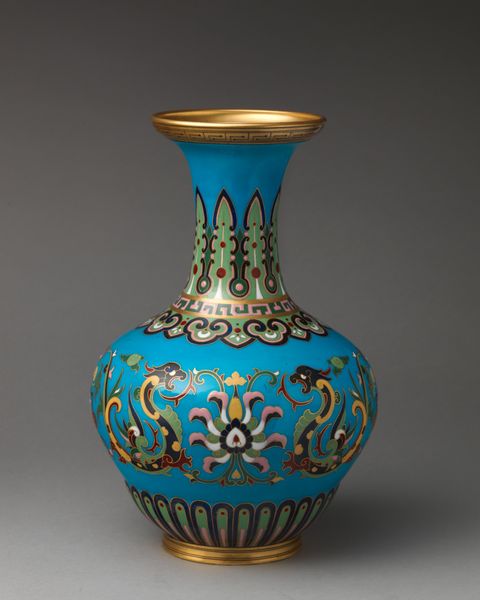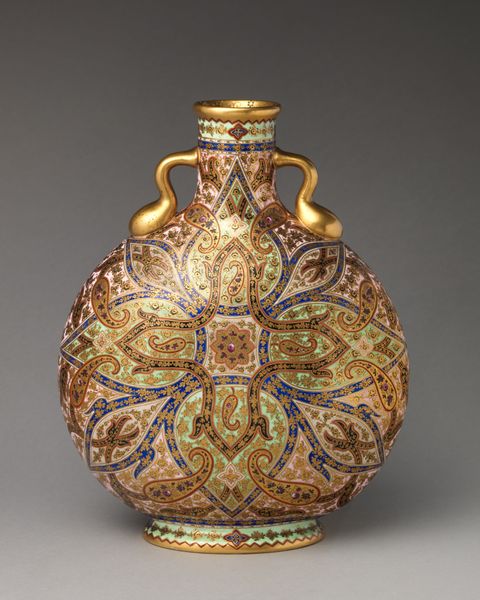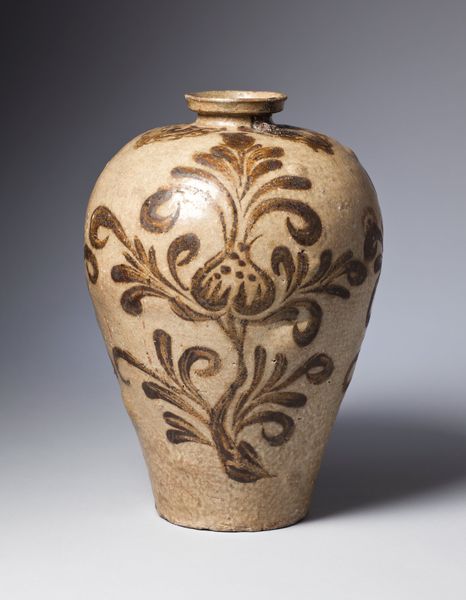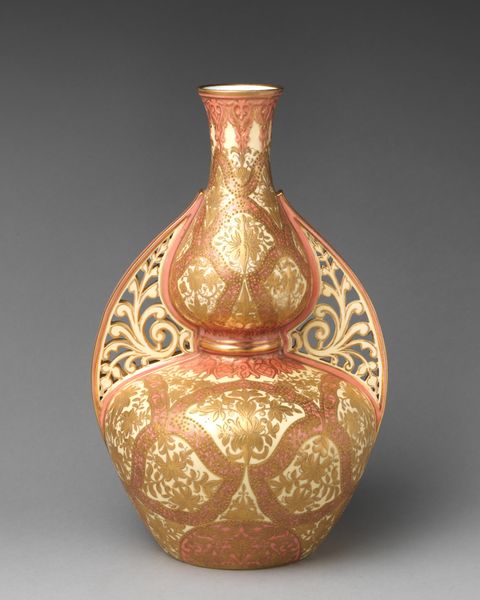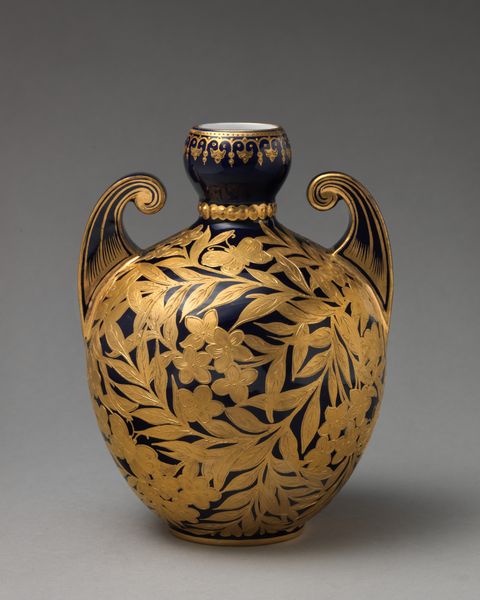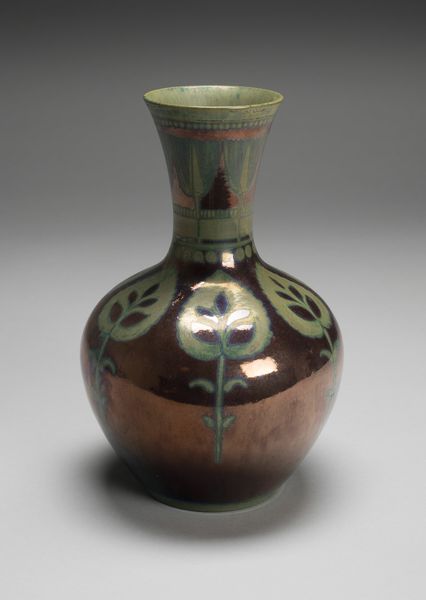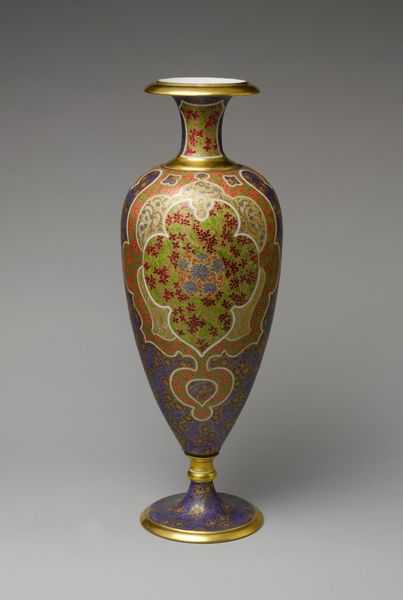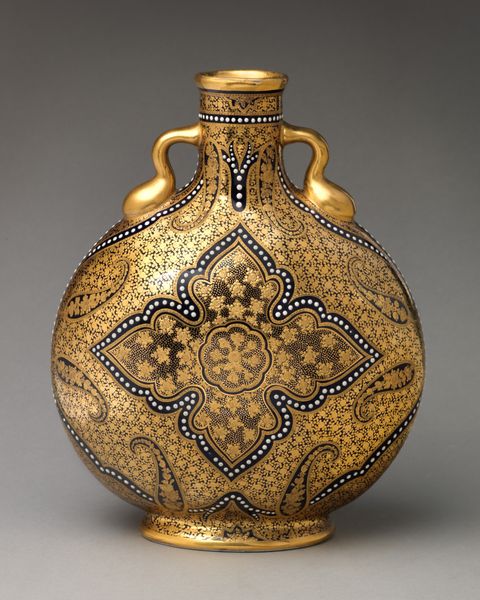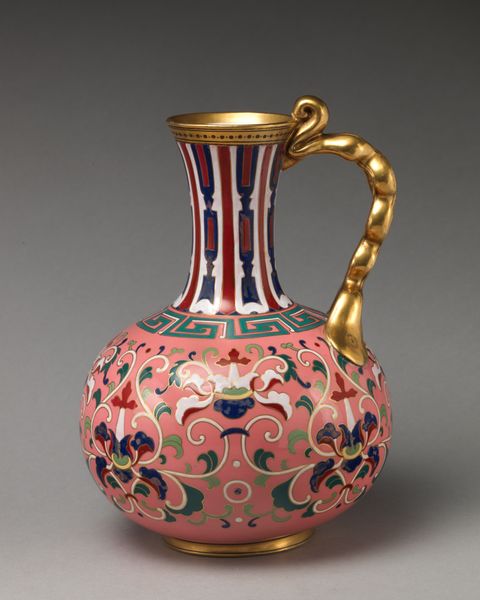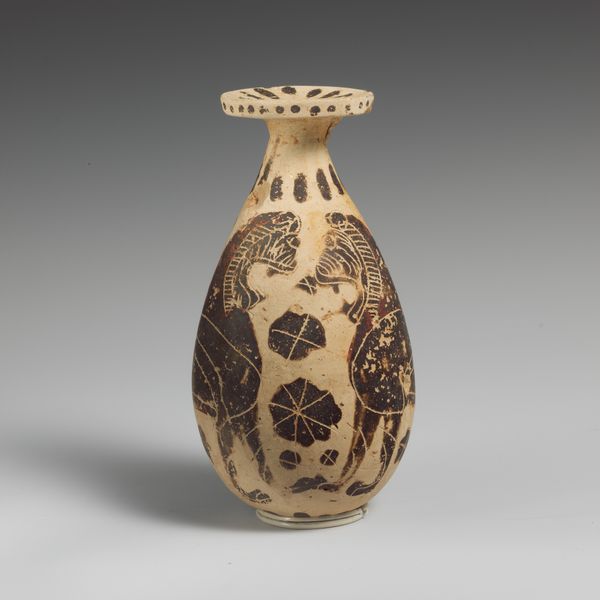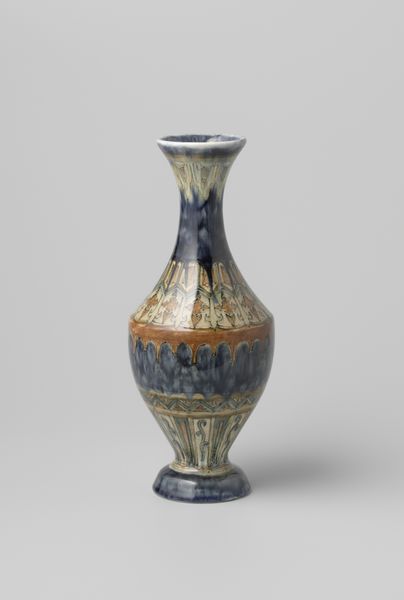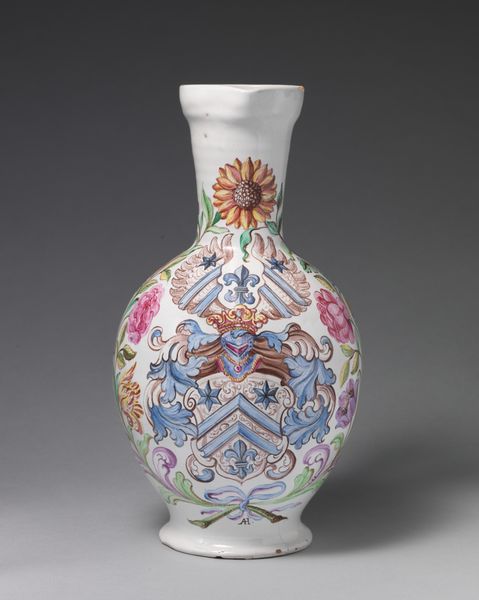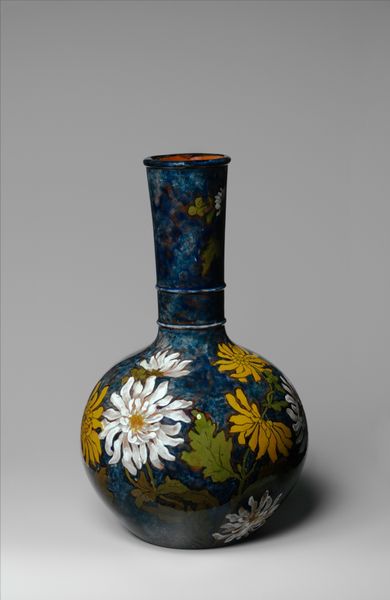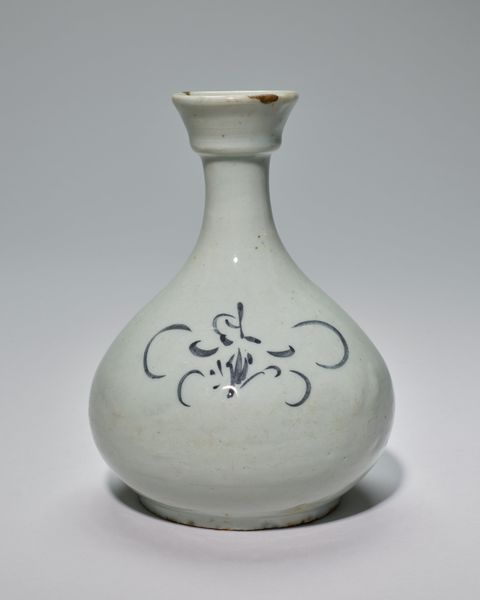
metal, ceramic
#
metal
#
ceramic
#
stoneware
#
ceramic
#
islamic-art
#
decorative-art
Dimensions: 10 1/2 x 7 in. (26.67 x 17.78 cm)
Copyright: Public Domain
Curator: Editor: Here we have an intriguing piece, a 17th or 18th-century Water Vase, also known as a "Lota," from an anonymous artist, crafted with metal and ceramic, residing here at the Minneapolis Institute of Art. I'm really drawn to the intricate inlaid design; it's like a field of flowers and birds trapped within this vessel. How should we approach understanding its presence? Curator: Well, first, let's think about its creation. Consider the labor involved in its construction. This wasn't simply shaped; the decoration seems to have required an incredibly delicate process of inlay, carefully placing small pieces of another material - maybe silver - into the darker surface of the metal or ceramic. And the decoration tells us a lot about its economic and political context as well. Who was buying such a carefully-crafted object, and where did the raw materials for the vase come from? What were the conditions in which such fine artisanal labors were performed? Editor: So you're saying to focus less on its pure artistry and more on how it came to be? It’s less about "beauty" and more about production? Curator: Precisely! The "beauty" is intertwined with labor and the availability of resources. Consider the function, too. It's a water vase, a utilitarian object elevated through design. The precious materials and expert workmanship suggest it was meant for a wealthy patron, subtly broadcasting power and taste through an object of daily life. Think of it: Water, a necessity, transformed into a display of affluence and a signifier of a particular society's values. How do you imagine the availability of advanced artistic or decorative capabilities impacted cultures across time? Editor: That's fascinating! I hadn’t thought about everyday objects being loaded with so much economic and social meaning. Curator: These objects, seemingly simple, actually reflect intricate networks of power, trade, and human labor. Editor: This has completely changed my view! It feels like I can see this Lota – this seemingly straightforward "Water Vase" – as more than just a vase! It now contains entire economies and hierarchies and offers evidence of skill! Curator: Exactly! The vase whispers tales of those who shaped it, those who bought it, and the resources they commanded.
Comments
minneapolisinstituteofart almost 2 years ago
⋮
This bulbous vessel merges the classical Indian form of a water vessel with the Persian- inspired type of metal inlay known as Bidri. A popular luxury item under the Islamic Sultanate Kingdoms of the Deccan Plateau (about 1300s–1700s CE), bidriware is unique to the subcontinent. It involves a complicated chemical process in which the base metal is blackened to offset the dazzling pattern of the inlay. Here, the combination of brass and silver inlay, known as ganga-yamuna, refers to respective hues of north India’s two great rivers, the Ganges and the Yamuna, which in Hindu (Brahmanist) traditions are worshipped as goddesses. Floral sprays and fluttering birds further evoke a spirit of bounty.
Join the conversation
Join millions of artists and users on Artera today and experience the ultimate creative platform.
